
AIA Virginia’s award-winning Emerging Leaders in Architecture (ELA) program was developed to jump-start the careers of young professionals. Conceived of and lead by a passionate steering committee of successful architects, the program was designed to share the things they wished they had learned in architecture school.
Each of the seven day-long-sessions focuses on developing essential skills like financial management, communication and negotiation, advocacy and public service, and much more.
Want to be a member of this elite group of leaders? The application for the 2019 class will be available later this summer. Contact Corey Clayborne for information on how to nominate an emerging leader or with any questions about the program.
We asked members of the ELA class of 2018 the same five questions, here are their inspiring answers.
Amber Hall

Q: What building evoked a strong reaction from you recently—either positive or negative?
A: Sagrada Familia in Barcelona actually brought tears to my eyes. It was the first time I ever experienced that type of emotional response to architecture. I will never forget the magnificence of standing inside that spiritual space.
Q: What is the last book you read?
A: #GIRLBOSS by Sophia Amoruso, for inspiration. Yes Please by Amy Poehler, for fun.
Q: How did you discover your passion for architecture?
A: I have 3 younger brothers, so needless to say, my life was full of Legos and action figures. I always insisted on “making houses” for their play figures to live in. I would build elaborate floor plans that would span between our bedrooms, down the hall, into the bathroom… Hours later when I was all done, they had already lost interest! (haha)
Q: What is your favorite thing to do to relax?
A; Essential oils diffuser, tea, and Netflix.
Q: What advice do you have for aspiring architects?
A: Be present in the work you do. Right here, right now–the job you’re in, the city you reside in, the people you surround yourself with all contribute to your career, your future and yourself. In a few years, you will look back and think “I’m proud of how far I’ve come!”
April Pilcher
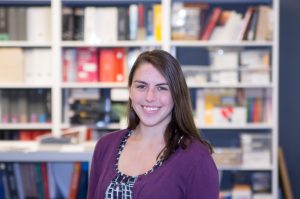
Q: What building evoked a strong reaction from you recently—either positive or negative?
A: I recently visited the National Museum of African American History and Culture in Washington, D.C. I really enjoyed looking up to see the layers of the facade and envelope as you enter the building, which becomes visible again as you peer out apertures on the upper floors. The exhibits themselves are also very well done. I definitely recommend making a visit.
Q: What is the last book you read?
A: The Alice Network by Kate Quinn
Q: How did you discover your passion for architecture?
A: As a child, I used to draw plans for different dream houses, but I never knew what “architecture” was. When I got to college, I chose to major in architecture knowing very little about the profession. However, the more I learned about design, the more I wanted to learn, and the more passionate I became about pursuing good design. I’ve been really lucky to have discovered my passion in such a way.
Q: What is your favorite thing to do to relax?
A: I like to read a book, especially pool-side or beach-side on a nice day!
Q: What advice do you have for aspiring architects?
A: Don’t be afraid of failure. Very few things are great the first time. Try again and again and again.
Ian Vaughan
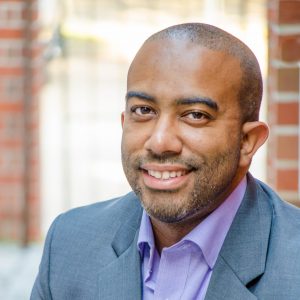
Q: What building evoked a strong reaction from you recently—either positive or negative?
A: I recently had the opportunity to spend some time in Washington D.C. and tour the three buildings that make up the Library of Congress. It was very inspiring. You could feel the knowledge and power just by walking into the space of the main reading room.
Q: What is the last book you read?
A: The last book I read was Art Activism. It’s a collection of artwork, poems, and essays by author: artist Aaron Maybin. Maybin is a former professional athlete who decided to use his platform to challenge social justice issues through his art and activism efforts within the City of Baltimore.
Q: How did you discover your passion for architecture?
A: It started at a very young age when I would draw buildings and build things with my Legos. Architecture has always been something I wanted to do and my passion for it grows as I get older.
Q: What is your favorite thing to do to relax?
A: I don’t get much time to relax, but I do enjoy trying new recipes and reading to my two young daughters.
Q: What advice do you have for aspiring architects?
A: Maintain your curiosity of architecture, and get a better understanding of the community you live in. Talk to other people who are not in the industry to challenge your ideas on architecture.
Jacob Combee
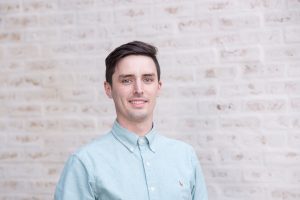
Q: What building evoked a strong reaction from you recently—either positive or negative?
A: The most memorable building I’ve been to is the Fisher House by Louis Kahn. It’s not a large house, but it is so well designed for the purpose of living. In terms of a strong reaction, all of these modern Wendy’s restaurants are something. It’s interesting that some of the most modern and boundary-pushing buildings are now fast food chains…
Q: What is the last book you read?
A: I read a lot of graphic design books and just finished Grid Systems in Graphic Design. I’m currently in the middle of a book called Rich Dad, Poor Dad about financials and business.
Q: How did you discover your passion for architecture?
A: I had a knack for organizing and finding a place for everything, and I’ve always been interested in how things work. Architecture is organizing and learning how things work, with the twist of doing it beautifully.
Q: What is your favorite thing to do to relax?
A: I like to go on a run or tune in to an interesting documentary.
Q: What advice do you have for aspiring architects?
A: Make Mistakes Faster. I think that was hung up in one of the first year studios at school and it stuck with me. It’s totally fine to mess something up, that’s the best way to learn but do it quickly so there is time to correct the mistake.
Jameel Tomlinson
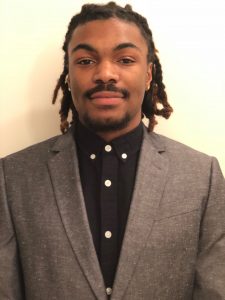
Q: What building evoked a strong reaction from you recently—either positive or negative?
A: Recently I learned about the 7 House by David Adjaye and was impressed by his approach to this infill project and use of black concrete.
Q: What is the last book you read?
A: Managing Your Day to Day: Build Your Routine, Find Your Focus & Sharpen Your Creative Mind
Q: How did you discover your passion for architecture?
A: Through traveling and visiting different cities. This allowed me to begin to understand the sense of place and initiated my desire to create positive environments for people who don’t have the opportunity to experience good architecture.
Q: What is your favorite thing to do to relax?
A: Spend time at the beach but when that’s not available I like to go to the park and spend time with friends.
Q: What advice do you have for aspiring architects?
A: Be dedicated and studious and understand that architecture is a life-long learning process. Understand your why or the reason you want to be an architect so that you can be focused and driven to produce work you’re proud of.
Kalee Hartman

Q: What building evoked a strong reaction from you recently—either positive or negative?
A: I’m really intrigued with historic hotels– the architecture of the buildings and the people who stayed at them. My job has allowed me to work on projects at the Jefferson Hotel and Pinehurst Resort. I could spend hours going through old floors plans and images to see how the spaces and styles have changed over the course of time.
Q: What is the last book you read?
A: The ARE 5.0 Review Manual
Q: How did you discover your passion for architecture?
A: Ever since childhood I’ve always said I wanted to be an architect.
Q: What is your favorite thing to do to relax?
A: Draw, paint or anything creative that doesn’t require sitting in front of a computer.
Q: What advice do you have for aspiring architects?
A: Ask questions and stay curious!
Keith Murphy
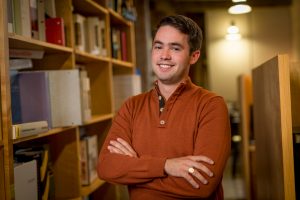
Q: What building evoked a strong reaction from you recently—either positive or negative?
A: The Nathan-Russell House in Charleston, South Carolina. It was built in 1808 and the level of detail an craftsmanship throughout is impressive, however, what was truly most impressive to see was the sweeping 2-story elliptical stair which floats off the wall seemingly without support. To think that they were able to construct something like that nearly 200 years ago using only wood and plaster knowing the structural feats we often go through today to achieve a similar result using steel and all our modern methods were inspiring and impressive to see.
Q: What is the last book you read?
A: This Side of Paradise by F. Scott Fitzgerald
Q: How did you discover your passion for architecture?
A: I have always had a love of buildings since I was young. I used to love looking at the old castles and houses in England and other parts of Europe and would study books on then and other houses in this country obsessively. Additionally, my mom designed the house I grew up in and I used to sit with her as she sketched and would go with her as she picked out materials etc and would visit the house as it was being built. Being exposed to all of that at a young age certainly helped spur my interest further. Ever since a young age all I wanted to study and do when I became an adult was design buildings – particularly houses, which is something I’m fortunate enough to be able to focus on in my current job.
Q: What is your favorite thing to do to relax?
A: When I’m able to one of the most relaxing things in my mind is to get out to the country on the river or go out on the boat – anything on the water. I’ve also always loved horses and riding since I was little and find the connection experienced with the horse and nature when out for a ride can be extremely relaxing and make you forget other concerns for at least a short time.
Q: What advice do you have for aspiring architects?
A: Don’t let professors in college deter you if it’s something you really want to do. For every truly inspirational professor, you have there will be those that will deter you because you differ in stylistic preferences or their desire for everything to be so hyper conceptual it lacks a grounding in the real world. For me, I found such hyper conceptuality a turnoff and something that did not inspire me, however, there is value in what it teaches in the ability to think outside the box. The is also often a common theme that I came across that “if you’re in it for money architecture is the place to be” and while that is true in some regards I was always told growing up that if you follow you’re passions success will follow as well.
Kimberly Jusczak
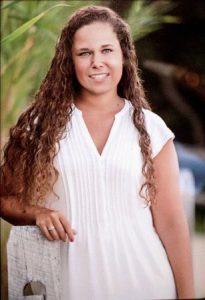
Q: What building evoked a strong reaction from you recently—either positive or negative?
A: I’ve been looking at Renzo Piano’s Rue de Meaux; the facade proportions are simple and elegant. It’s inspiring my current project.
Q: What is the last book you read?
A: Does proofreading my thesis documentation count?
Q: How did you discover your passion for architecture?
A: I think I am continuously discovering my passion for architecture, whether in the detail of a project I am working on or by something I experience on my commute work.
Q: What is your favorite thing to do to relax?
A: Anything involving sunshine and the beach, there is just something about salt air.
Q: What advice do you have for aspiring architects?
A: My advice would be to try everything. Use your internships to try out a variety of firm and project types, and then find your niche – find what it is about architecture that excites you the most.
Laura Green
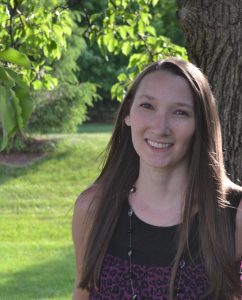
Q: What building evoked a strong reaction from you recently—either positive or negative?
A: I recently saw Ascent at Roebling’s Bridge by Daniel Libeskind. I’ve seen this building many times since its construction. It reminds me how exciting architecture is and how a building can truly affect people.
Q: What is the last book you read?
A: The Pillars of the Earth by Ken Follett
Q: How did you discover your passion for architecture?
A: I always liked math and being creative. I looked into several potential careers, but after touring VT’s architecture school, I just knew it was what I’d been searching for.
Q: What is your favorite thing to do to relax?
A: I enjoy sitting out by the pool with a good book.
Q: What advice do you have for aspiring architects?
A: Don’t forget to add a bit of yourself to each of your projects. That is what makes a building, architecture.
Michael Peterson
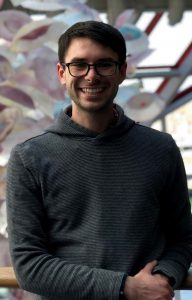
Q: What building evoked a strong reaction from you recently—either positive or negative?
A: The Taipei 101 building in Taipei, Taiwan. What amazes me about the building is less so the building itself, but instead the implications politically the building had and has had since it’s inception. Not only was it a record-setting achievement on both the local and global level architecturally, but influenced a political shift in the region surrounding Taiwan and its geopolitical and economic presence.
Q: What is the last book you read?
A: 101 Things I Learned in Architecture School by Matthew Frederick
Q: How did you discover your passion for architecture?
A: I would use almost anything and everything around to build “towers.” Wooden blocks were the go-to for building a tower – which would be followed by a controlled demolition brought on by catapults, trebuchets, and launchers of all kinds in a fantastic siege to pinpoint the weakest elements of the towers.
Q: What is your favorite thing to do to relax?
A: Right now it would be playing around with Virtual Reality and 3D Printing knick-knacks from the internet to give to my friends so I appear cooler than I really am.
Q: What advice do you have for aspiring architects?
A: Invest in yourself. Find hobbies or activities that you find enjoyable that feedback into yourself productively. Buy that camera, spend those extra few minutes to watch one more tutorial, go to that conference, buy or do that thing that builds up a skill or ability that makes you, you. It will pay for itself, and dividends if you invest in yourself and do what you enjoy.
Nancy Redenius
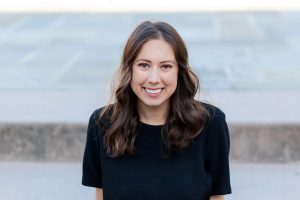
Q: What building evoked a strong reaction from you recently—either positive or negative?
A: Notre Dame du Raincy, a modernist church with a material palette of concrete and stained glass. I found it to be a wonderful study of color and composition.
Q: What is the last book you read?
A: Old Path, White Clouds by Thich Nhat Hanh, a narrative recounting of the life and teachings of Gautama Buddha. On the design front, I am just starting Rudolf Arnheim’s The Power of the Center: A Study of Composition in the Visual Arts.
Q: How did you discover your passion for architecture?
A: Traveling from a young age exposed me to a variety of built environments and contributed to my interest in the relationship between people, culture, and architecture. I always knew I wanted a career that could have a positive impact on people’s lives, and I believe that good architecture has the power to positively impact the lives of its users.
Q: What is your favorite thing to do to relax?
A: Spending time with friends, ideally outdoors.
Q: What advice do you have for aspiring architects?
A: Align your work with your values and set yourself up to do work in which you find purpose.
Noah Bolton
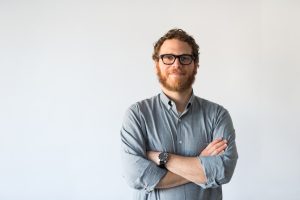
Q: What building evoked a strong reaction from you recently—either positive or negative?
A: Massimo Carmassi – Reconstruction of San Michele, Borgo Pisa. While doing research for a project we are currently designing in our office I came across this project and was very taken by Carmassi’s ability to balance his new intervention with the weight of the historical building. His use of masonry and the carved out sculptural spaces are particularly beautiful in how they interact with light and frame views back to the existing context.
Q: What is the last book you read?
A: Between the World and Me by Ta-Nehisi Coates
Q: How did you discover your passion for architecture?
A: While studying Industrial Design at Pratt Institute I was turned onto Samuel Mockbee and the work done at the Rural Studio. I was inspired by the idea of using design as a way of providing a service to those who design may not normally serve. In addition, I was excited by the spirit of the work and the use of inexpensive materials to achieve simple/beautiful results.
Q: What is your favorite thing to do to relax?
A: Fly fishing and gardening (when not wrangling my two boys)
Q: What advice do you have for aspiring architects?
A: Build physical things, make stuff, and explore materials with your hands. Understanding how things are built and how materials are transformed and put together will make you a better architect – and its fun.
Rick Fischl
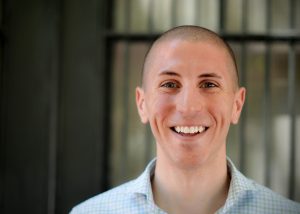
Q: What building evoked a strong reaction from you recently—either positive or negative?
A: I had not been to DC for pleasure in several years since I left my job there to come work in Richmond, but when I lived in DC I always loved the Hirshhorn and thought it was an underrated modern piece of architecture. I visited again just a few weeks ago though, and my appreciation for the building was re-ignited and still love it for what it is – a humble, modern, and honest building with an inherent marriage between form, materiality, and structure.
Q: What is the last book you read?
A: Thinking Architecture by Peter Zumthor, probably for the 9th time as it’s become an annual ritual for me ever since I read it the first time. Zumthor’s words and stories are poetry to me, and every time I read it my passion is reignited and it reminds me why I do what I do, especially when the day-to-day can get tough.
Q: How did you discover your passion for architecture?
A: I wanted to be an architect since I was 7 as I loved art and construction as a kid, but it wasn’t until I visited Belvedere Gardens in Salem as a student at Virginia Tech where my love for architecture was confirmed as I felt as though I truly understood the power of design to uplift the human spirit for the first time, and what the built environment can do to make a positive impact in the world at a range of scales.
Q: What is your favorite thing to do to relax?
A: When I find free time, just about anything with my wife. We’ve come to love enjoying the outdoors together and find ourselves hiking, biking, and stand-up paddle boarding these days to unwind. We’ve also both been getting really into cooking together this year as well.
Q: What advice do you have for aspiring architects?
A: Love what you do. Design is not a job, it’s a lifestyle, and if you don’t love it you’ll have a long and unrewarding career. If you love it you can make great things, teach others to find their passion, and better the community around you. Besides, it’s too much fun not to love.
Terry Lynn Wolfe
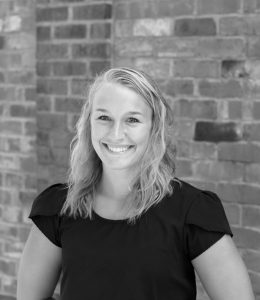
Q: What building evoked a strong reaction from you recently—either positive or negative?
A: Center in the Square in downtown Roanoke. This is one of my favorite buildings in Roanoke because it serves as a landmark and central hub for activity in downtown. I also really enjoy this building because the firm that I currently work for, Spectrum Design, did the revamped renovations for this building. Whenever I have family or friends come to town to visit, I always take them in this building and up to the rooftop to see the great view of downtown and surrounding mountains. I love hearing other people talk about how much they love this building and like going to events here- it has certainly had a positive impact on the community and downtown Roanoke!
Q: What is the last book you read?
A: The Image of the City by Kevin Lynch.
Q: How did you discover your passion for architecture?
A: Growing up, I was always on the more creative side. I found joy in building things out of sticks and stones from my backyard and also playing with Legos and Lincoln Logs. I also used to sit in from of the TV and sketch the characters in cartoon shows. Starting as a high school Freshman, I took my first drafting course- and yes, actual hand drafting. I continued to take more drafting courses every semester until I graduated high school and decided to go on and pursue a career in architecture.
Q: What is your favorite thing to do to relax?
A: This isn’t necessarily relaxing (not at all actually) but my favorite thing to do outside of work/architecture is CrossFit. I really enjoy pushing myself physically, getting stronger and competing. It has certainly become a hobby of mine!
Q: What advice do you have for aspiring architects?
A: Don’t be afraid to ask questions and always try to collaborate with your peers! Be an observer as well as a go-getter. Learn as much as you can from those that you look up to and always try to apply what you’ve learned. Only being a year out of school, I have already learned so much from my co-workers and continue to learn something new every day.
Tyler Jenkins
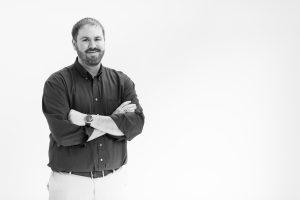
Q: What building evoked a strong reaction from you recently—either positive or negative?
A: Not a building, however an entire city. A trip to Charleston, South Carolina reminded me why I fell in love with architecture.
Q: What is the last book you read?
A: The Ballast ARE book as I am in the middle of taking my exams.
Q: How did you discover your passion for architecture?
A: Growing up in Central Virginia, our class trips frequented some of the great historic homes of the area. I discovered my passion for architecture through these early site visits and dreamed of what I could create one day when I became an architect.
Q: What is your favorite thing to do to relax?
A: Being outside working in the garden, helping out on the farm and spending time with friends and family.
Q: What advice do you have for aspiring architects?
A: Always be open to new ideas and avoid becoming set in your ways. Travel the world to see new things and spend time outside of the office environment are great ways to make sure this happens.
